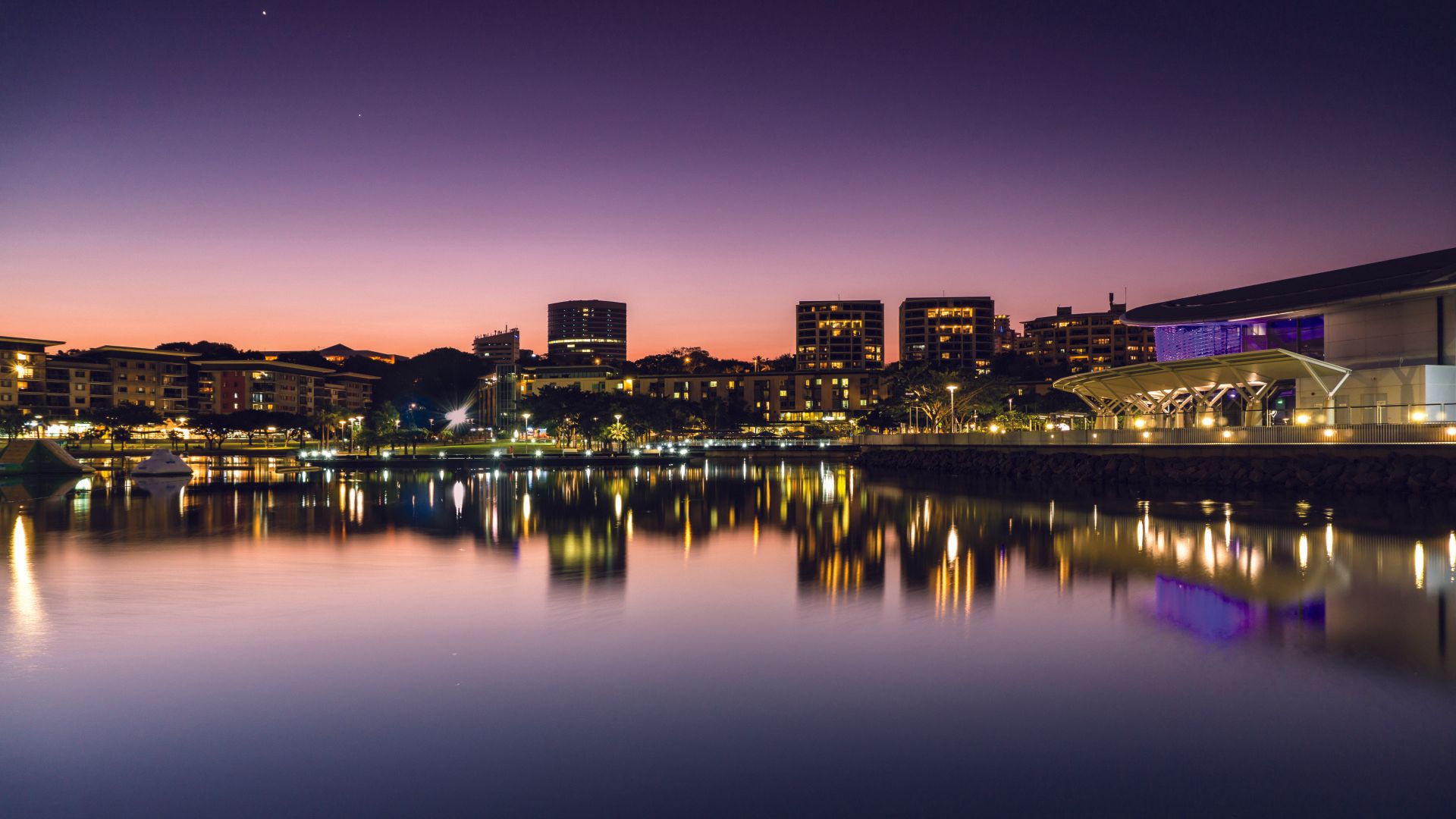Large-Scale Economic Development is the Canvas for Innovation
How is the government planning for the future of Northern Australia? We interviewed Shaun Drabsch, CEO of the Northern Territory Department of Industry, Tourism and Trade, to illuminate the Territory’s vast economic potential.

In his role, Drabsch is responsible for innovation, and he is one of the Territory’s most senior civil servants. He is undertaking a PhD at Griffith University in infrastructure studies, a field in which he has considerable experience as a former director of PwC.
Most southerners have a limited understanding of the NT’s current activities and potential. What would you tell them?
SD: The Northern Territory has a vast amount of arable land and more water availability than is often recognised. We are working on new growing systems and harnessing rainfall for improved irrigation. If we were able to harness just 15,000 gigalitres of the 2 million gigalitres that is the NT’s annual rainfall, we could roughly double the amount of productive arable land in the whole country – an additional 1.5 million hectares.
The NT is known mainly for beef cattle. What else is important to its economy?
SD: To start, remember that soybeans, cotton, peanuts and chickpeas are all either tropical or semi-tropical crops. You also have to think about aquaculture, a further potential boom area, with companies like SeaFarms looking very prospective. They are involved in an innovative development worth $1.5 billion in prawn aquaculture. But the mining industry is the Territory’s largest industry and the single largest generator of export revenue, valued at $4.4 billion in 2019-20.
We’ve been reading about the first steps into the Space Industry .
SD: Yes, this is very exciting, with the construction outside of Nhulunbuy of the Arnhem Space Centre. We have attracted involvement from the European aerospace company ArianeGroup. This, as you know, is seen as a fast-growth industry of the future, expected to be worth $12 billion in Australia within a few years. But, more specifically to the NT, it will synergistically attract related growth industries.
What other physical attributes are significant fulcrums to growth?
SD: You would have to point to the only functional deep-water port between Port Hedland and Cairns. And, of course, the proximity to Asia is an advantage. An example that not many people realise is that we are a very viable competitive location to Singapore for data centres. Singapore has natural constraints in land and in energy. Like Singapore, we are stable and trusted, with other advantages in high-security data storage and transmission through undersea cables, to and for Asian clients.
You mentioned energy capability in connection with data and competition with Singapore.
SD: Yes, it is called Sun Cable. I believe that by building in the Territory the world’s largest solar farm, the world will see the Territory, as a place to invest but as an important source of low-emission energy. Sun Cable is on track for launch in 2026 and will be so large, at 12,000ha, it will be visible from space. And this will be an earner. This energy will be needed offshore – Singapore being one of the prime users – as well as, of course, locally.
And you have a fairly new innovation hub for incubation?
SD: Yes, and it is gaining momentum. It has the right partner foundation – AusIndustry, with Paspalis as the venture capital arm, and the NT Government and Charles Darwin University. It has an excellent inner-city location and all of the ingredients necessary to encourage and properly incubate new businesses.
What role is Charles Darwin University playing?
SD: Universities are essential in the makeup of any fully functioning innovation hub. They can generally muster research facilities to meet any requirement brought forth by a new company. They have the resources and talent. And there is another side to this – international connections, access to collaborators. This is particularly relevant in our case, as we have a focus on Asia, specifically Singapore and China. They are an invaluable partner.
On another subject, infrastructure – something you know a lot about. What are the big items underway or planned for the Territory ?
SD: Let me underline that infrastructure is not just about building structures. It is also about creating networks of connectivity that enable economic exchange. Infrastructure, properly thought out, brings efficiencies and adds directly to a region’s competitiveness, its economic wellbeing.
Two of the larger goals that will be achieved as a result of infrastructure are 50 per cent renewable energy by 2030 and immensely improved connectivity. This latter area includes high-speed connectivity via a Darwin hub to both Asia and the US. And, of course, a lot of individual projects are either being examined or are underway. Terrabit Territory and the Darwin Data Centre projects both have significant meaning to creating jobs and building efficiencies and competitiveness.
Of course, we hear a lot about tourism in the Territory. What’s happening with infrastructure in that space?
SD: A lot is going on. Some of this is the continued city beautification in Darwin and the State Square redevelopment. On a bigger scale there are plans for destination resorts that link our pastoral history and heritage, and glamping-style experiences that include an innovative "foodie" experience. There is more scope for guided walking trails and guided mountain bike riding. Developing an industry around servicing superyachts also has potential. Tourism will always be a mainstay here, for obvious reasons. There is no place on Earth like the Northern Territory.
I guess that’s how the new slogan arose: “Different in every sense”. And you have another Territory slogan, don’t you?
SD: Yes, one that is grammatically quirky but delivers the spirit of the place, now. It's “Boundless Possible”.










